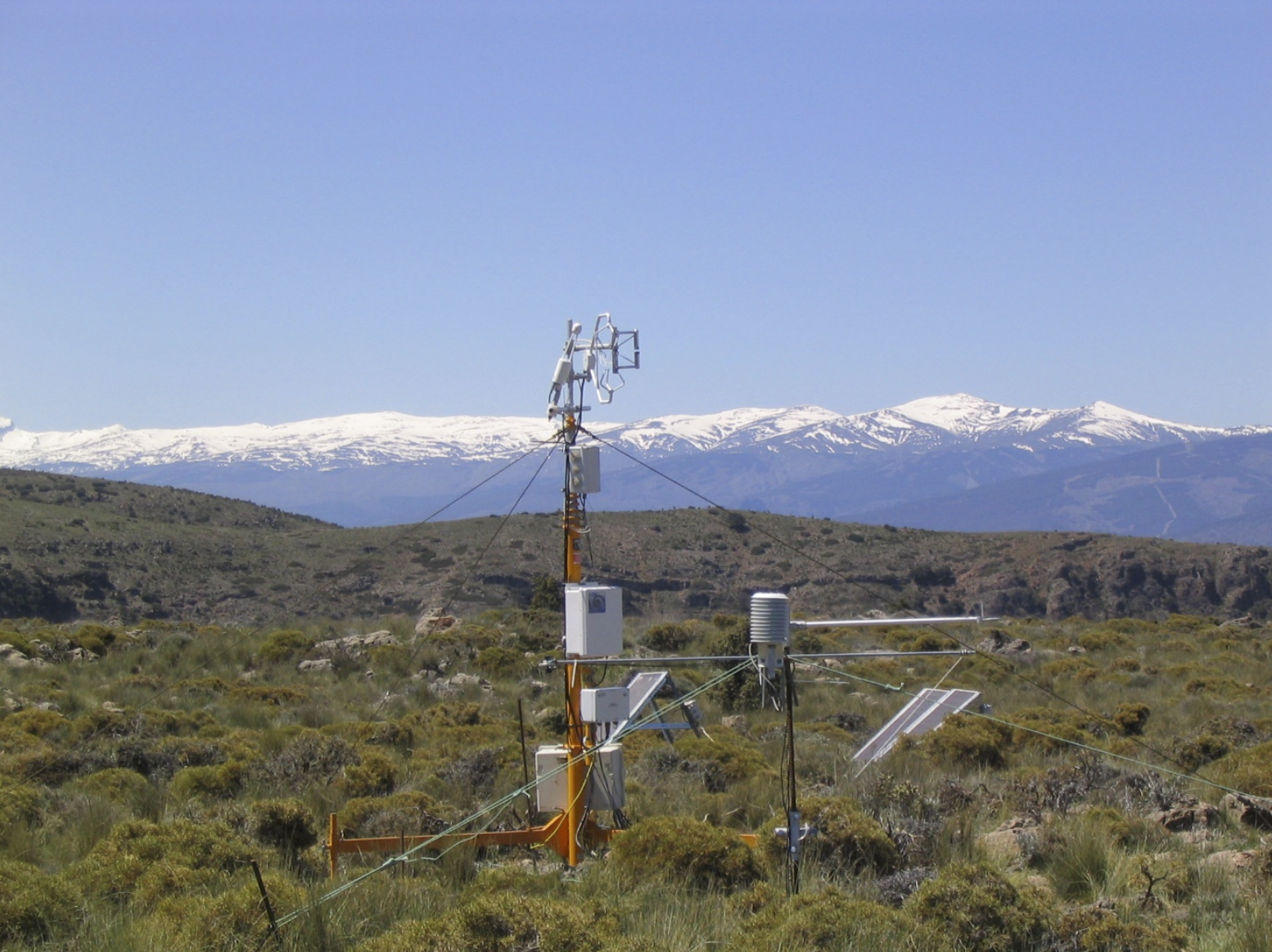Subterranean ventilation promotes CO₂ emissions to the atmosphere
By María Rosario Moya and colaborators
 Dryland ecosystems, such as shrublands, grasslands or savannas, cover 40% of the earth's surface and play a key role in the carbon cycle. They generally act as net carbon sinks given that CO₂ fixation by photosynthesis often exceeds CO₂ emissions from root respiration and decomposition of soil organic matter by microorganisms. Traditionally, it has been thought that this CO₂ is emitted into the atmosphere at the same time as it is produced. However, we have recently shown that all this CO₂ is not emitted immediately, as some is stored in the vadose zone (the part of the soil between the surface and the groundwater), and subsequently emitted because of wind action.
Dryland ecosystems, such as shrublands, grasslands or savannas, cover 40% of the earth's surface and play a key role in the carbon cycle. They generally act as net carbon sinks given that CO₂ fixation by photosynthesis often exceeds CO₂ emissions from root respiration and decomposition of soil organic matter by microorganisms. Traditionally, it has been thought that this CO₂ is emitted into the atmosphere at the same time as it is produced. However, we have recently shown that all this CO₂ is not emitted immediately, as some is stored in the vadose zone (the part of the soil between the surface and the groundwater), and subsequently emitted because of wind action.This phenomenon, called subterranean ventilation, occurs when the wind moves the air within the vadose zone, facilitating the release of CO₂ stored in the soil pores. Although some of our previous studies had already identified this process in ecosystems in southeastern Spain, its global impact was unknown. To investigate this question, we have analysed data on CO₂ fluxes and environmental variables from 145 arid and semi-arid ecosystems worldwide. Our results show that one third of the ecosystems studied experiences this phenomenon. Using statistical models, we have identified a high correlation between emitted CO₂ and wind speed indicating that wind does indeed facilitate CO₂ emission in these environments. Given the extent of these ecosystems, it is estimated that the global CO₂ storage capacity of the vadose zone could reach 2 Gt (gigatonnes) of carbon, comparable to the amount fixed annually by the oceans.
The relevance of the findings of this study lies in the fact that this phenomenon could explain why arid ecosystems act both as a source or sink of atmospheric CO₂ in different years. However, if the wind releases CO₂ on a regular basis, the storage capacity of these soils could be lower than estimated. Furthermore, the expansion of these ecosystems due to anthropogenic climate change and desertification could intensify the process. In conclusion, this study highlights subterranean ventilation as a key process in carbon dynamics in arid zones and, therefore, integrating it into climate models would improve predictions of the global carbon balance and contribute to the development of more effective strategies to mitigate climate change.
Read the full study here:
Moya, M. R., López-Ballesteros, A., Sánchez-Cañete, E. P., Serrano-Ortiz, P., Oyonarte, C., Domingo, F., & Kowalski, A. S. (2022). Ecosystem CO2 release driven by wind occurs in drylands at global scale. Global Change Biology, 28, 5320–5333. https://doi.org/10.1111/gcb.16277
Text written by María Rosario Moya and edited by Clara Ruiz and Félix Picazo
